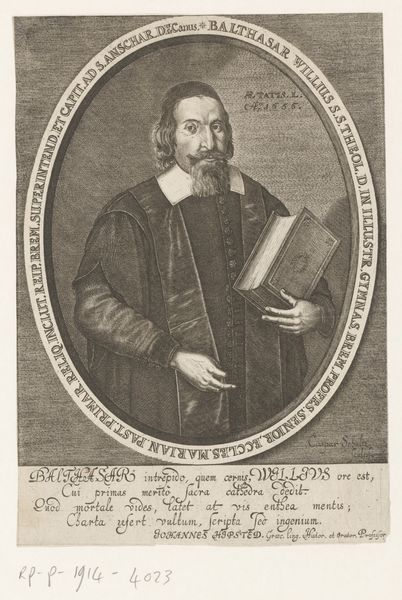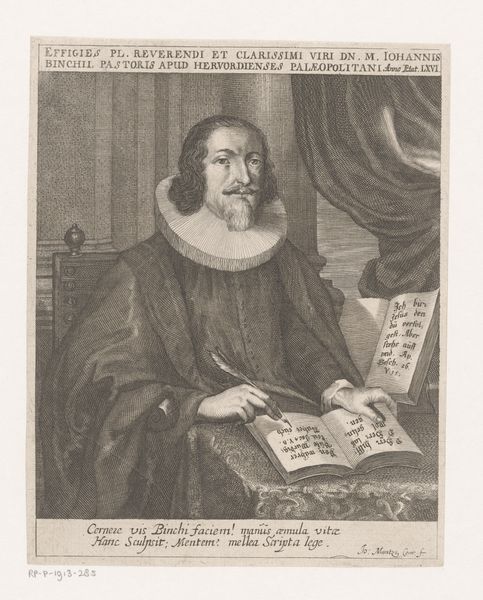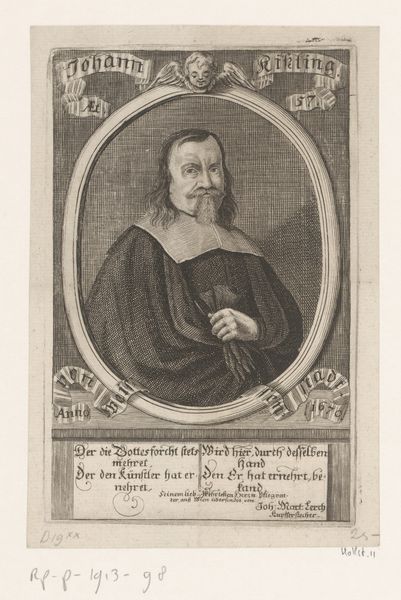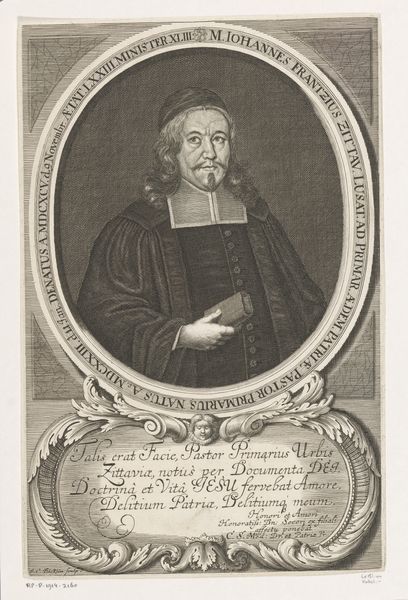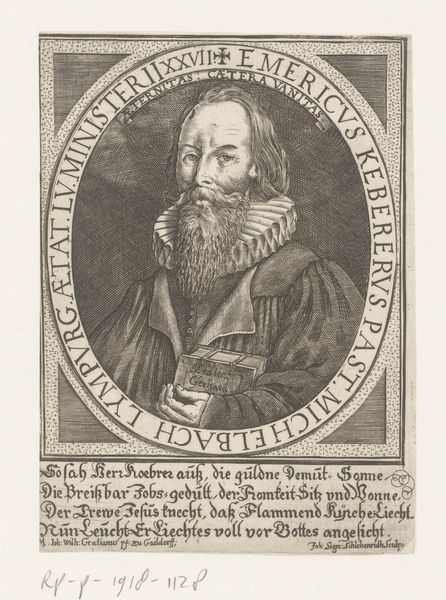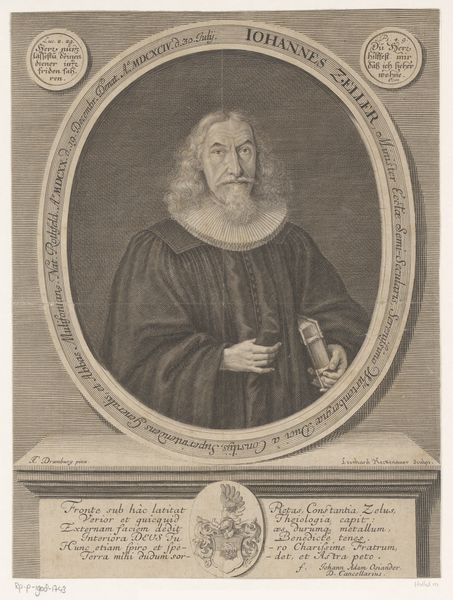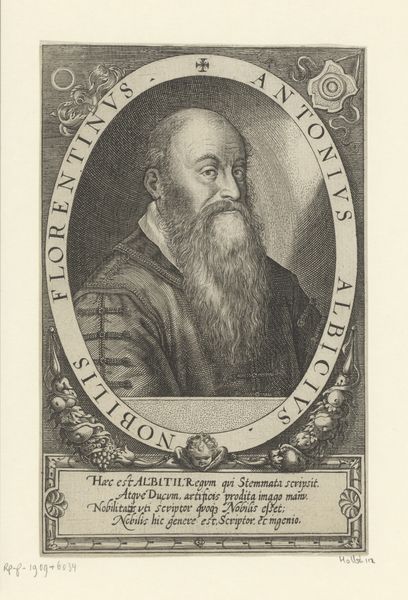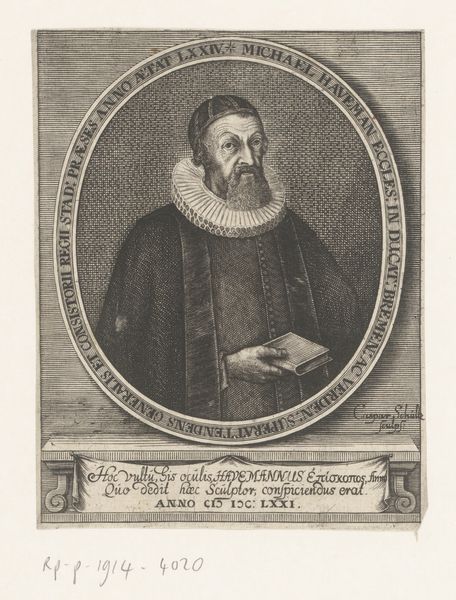
print, engraving
#
portrait
#
baroque
# print
#
old engraving style
#
history-painting
#
engraving
Dimensions: height 203 mm, width 132 mm
Copyright: Rijks Museum: Open Domain
Editor: This is a fascinating print, a portrait of Samuel Enander by Peter Troschel, created sometime after 1649. It’s rendered in this old engraving style. I’m immediately drawn to the contrast between the intricate details of Enander’s face and the somewhat stark background. How do you interpret this work within its historical context? Curator: Given that the print places Enander, who served in the Swedish military, within this oval frame accompanied by inscriptions, symbols and Latin text, I'm intrigued by the assertion of power and identity at play here. It's not just a portrait but a constructed representation meant to convey status and authority. We should also consider the Reformation’s emphasis on text and the role of religious figures in society during this period, as a key intersection to understanding the importance of knowledge. The book in his hands reinforces his intellectual status, but what specific aspects of identity and authority do you find particularly compelling? Editor: The way the inscription frames his figure suggests a carefully crafted image, more about projecting authority than capturing reality. Curator: Precisely. This visual language reveals how early modern elites wished to be perceived. Do you notice how elements such as the laurel wreaths contribute to a specific visual message? These details were not arbitrary but laden with cultural meaning, linking him to classical ideals of scholarship and virtue. Editor: Yes, it creates this aura of accomplishment. It’s interesting how it’s almost a marketing of Enander's image as a leader. I never really considered these older portraits as having a political voice like this before. Curator: Exactly. The act of creating and disseminating such a portrait contributes to constructing a particular narrative and securing his place in history, something we see echoed in many contemporary forms of self-representation. Editor: So this portrait becomes a deliberate act of shaping his legacy. This makes me rethink the power dynamics inherent in portraiture. Thank you! Curator: My pleasure. Considering such issues allows us to uncover the often-unacknowledged social forces that shape our perception and understanding of art.
Comments
No comments
Be the first to comment and join the conversation on the ultimate creative platform.
